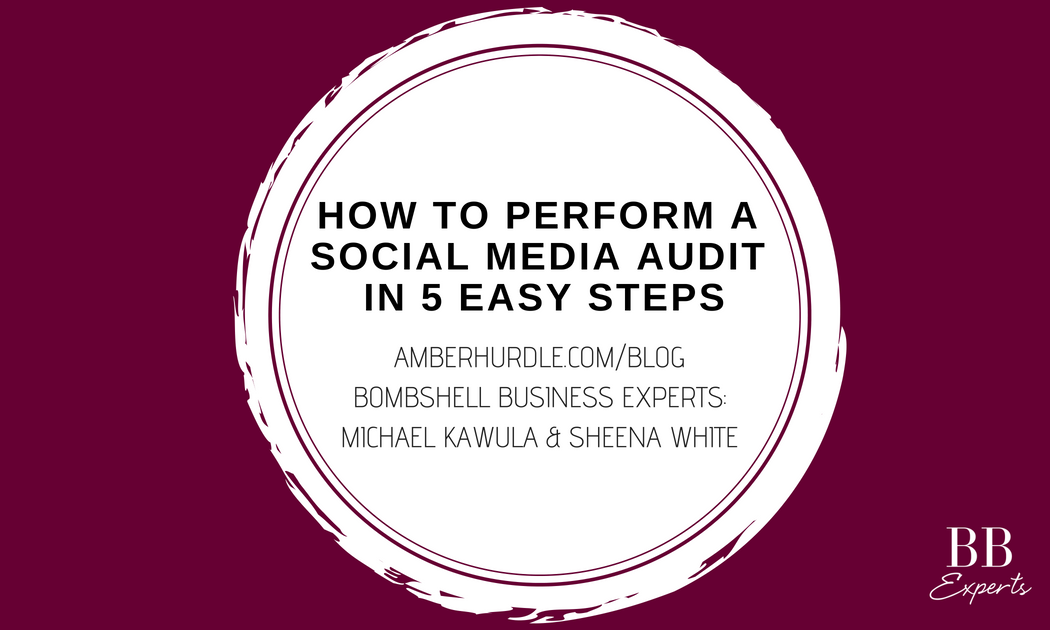Does just the mention of the word “audit” make you shudder? It’s okay, no one likes them.
However, as much as you may hate hearing this, they’re incredibly important (at least, they are for your social media efforts and really every area of your business to be honest).
Without doing an audit periodically, how will you distinguish what’s working from what isn’t? How will you know you aren’t wasting your time and spinning your tires? Or, for that matter, how do you know there aren’t huge opportunities that you’re overlooking?
No, audits may not be fun, but they are important and can make a big impact on your marketing efforts.
And they DON’T have to be painful. In fact, I’m going to share how you can do an audit of your social media in just five steps.
1. Review all your profiles.
This may sound obvious and you may even be thinking, “I look at my social profiles all the time, why am I doing it again.” Hear me out, though.
It’s not uncommon for employees (or even you) to create social profiles on different channels (like when something is shiny and new) and then abandon them and forget they’re there. It’s also not uncommon, especially if you’re moving fast, to only update things like cover images and profile pictures on the ones you’re actively using… and maybe overlook some of them.
Some things to check include:
- Links (are they accurate and working?) and descriptions (are they up to date?)
- Cover images and profile pictures (are they on brand?)
- Is any information missing?
2. Analyze Your Performance.
This is the step that’s going to take a while. Set up a spreadsheet with all of your social platforms and create columns for the different metrics.
Some things you should be looking at are:
- The average engagement rates your posts are receiving
- The click-through rate on each link or the number of link clicks
- The average number of shares per post (or overall the monthly shares)
- The number of times your brand is being mentioned on the platform
These are just a few ideas and the data will vary a bit from platform to platform.
Some things you should NOT get overly hung up on are impressions and likes. While you obviously need a following for people to see your content, a small and highly engaged audience is worth far more than a massive, unengaged audience. And impressions are great, but if no one is clicking through to your website or content, then they don’t mean anything to your business’s potential ROI.
3. Review Your Publishing Schedule.
How many times per week are you publishing on each social media channel? And what times are you typically posting? When SHOULD you be posting?
Both Facebook and Instagram provide guidance in their analytics, suggesting the best times to post to reach your ideal audience. Twitter is a little different. Ideally you should be posting at least hourly on that platform, if not more. You can automate that entire process, but we’ll save that for a future post.
4. Identify Your Top Posts.
This is actually something you should do regularly (definitely more than once a year).
What type of content does your audience best engage with?
For Dinner Table MBA’s Instagram account, I’m always analyzing the number of likes and comments each post gets to see if there’s a trend, when one TYPE of post (text only versus image background versus video) gets the most engagement.
Identify your top posts on each platform and note what form it came in (video, text, etc.).
5. Decide Whether to Add or Abandon Profiles.
After doing an analysis, you may realize that your Instagram profile is getting very low engagement and not sending you any traffic. You may want to consider cutting back on your efforts there or abandoning it altogether (I wouldn’t recommend deleting a profile if you’ve claimed your name).
That said, it’s also important to ask whether a poor performance is in any way connected to a lack of effort. Perhaps you saw some results from a small effort and increasing your activity on that platform could have a big impact.
Final Thoughts
Once you’ve finished your audit, it’s time to set new goals. What do you want to accomplish with your social efforts? Once you’ve identified these new goals, write them down and come up with a new roadmap for how you’re going to get there. Good luck!
About the Author
Mike Kawula and Sheena White
Entrepreneurs GSD
Online Marketing
Mike Kawula and Sheena White are the host of the Entrepreneurs GSD Podcast and Founders of the Entrepreneurs GSD Coaching program, that shows entrepreneurs how to truly GSD using online marketing strategies. Sheena’s background is as a professional copywriter and Social Media Strategist, while Michael is a serial Entrepreneur with 20 years’ experience in various online and offline businesses.
Get Social with Mike: Website | Facebook | Twitter | Instagram | LinkedIn | YouTube
Get Social with Sheena: Website | Facebook | Twitter | Instagram | LinkedIn


